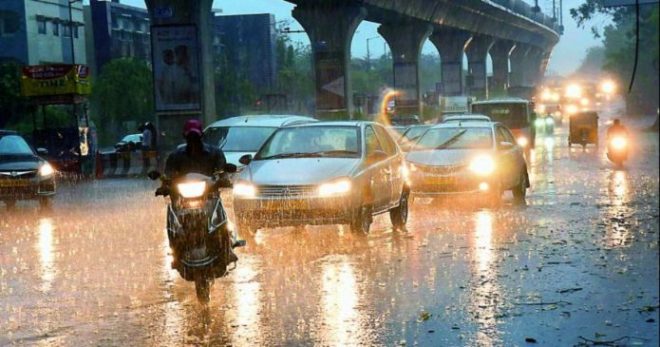A yellow alert means that isolated, scattered rain of 7.5 to 15 mm is expected and likely to continue for a few hours
The India Meteorological Department (IMD) on Sunday issued an alert predicting heavy rain in Kerala for the next five days. A yellow alert has been issued in 11 districts of the state, excluding Thiruvananthapuram, Pathanamthitta, and Kollam.
Heavy to very heavy rainfall (7-11 cm) is likely to lash Kerala on Monday. Thunderstorms accompanied with lightning are also likely to occur during the heavy rainfall, the IMD said in a statement.
The IMD on Sunday issued an ‘yellow’ alert in Delhi for 48 hours, and an ‘orange’ alert for Wednesday, with forecasts of moderate to heavy rainfall. A yellow alert means that isolated, scattered rain of 7.5 to 15 mm is expected and likely to continue for a few hours.
Parts of the national capital received light rainfall on Sunday and the maximum temperature in the city settled at 35.7 degrees Celsius, a notch below the average, the IMD said. The minimum temperature was recorded at 26.2 degrees Celsius, two notches below the average, it said.
Latest Weather Updates:
• In Delhi, the maximum and minimum temperatures are expected to hover around 36 degrees Celsius and 27 degrees Celsius, the IMD said.
• The Met department has predicted light to moderate rain for many places in Rajasthan on Monday. An official of the department said that till 5.30 pm on Sunday, 44 mm rainfall was recorded in Chittorgarh, 31 mm in Bhilwara, 14.8 mm in Bikaner, 11.8 mm in Churu, 9 mm each in Jaipur and Sikar, 7 mm in Ajmer and 5 mm in Baran.
• Isolated heavy to very heavy rainfall likely to occur over Konkan regions and Goa from July 4 to 7, coastal Karnataka on July 4 and 5, Gujarat and central Maharashtra during July 5 to 7, as per the Met department’s daily weather report released on Sunday.
• A cyclonic circulation lies over south Jharkhand and neighbourhood extending upto upper tropospheric levels. Under its influence, a low pressure area is likely to form over the same region over the course of the day and night, the IMD said.





































